
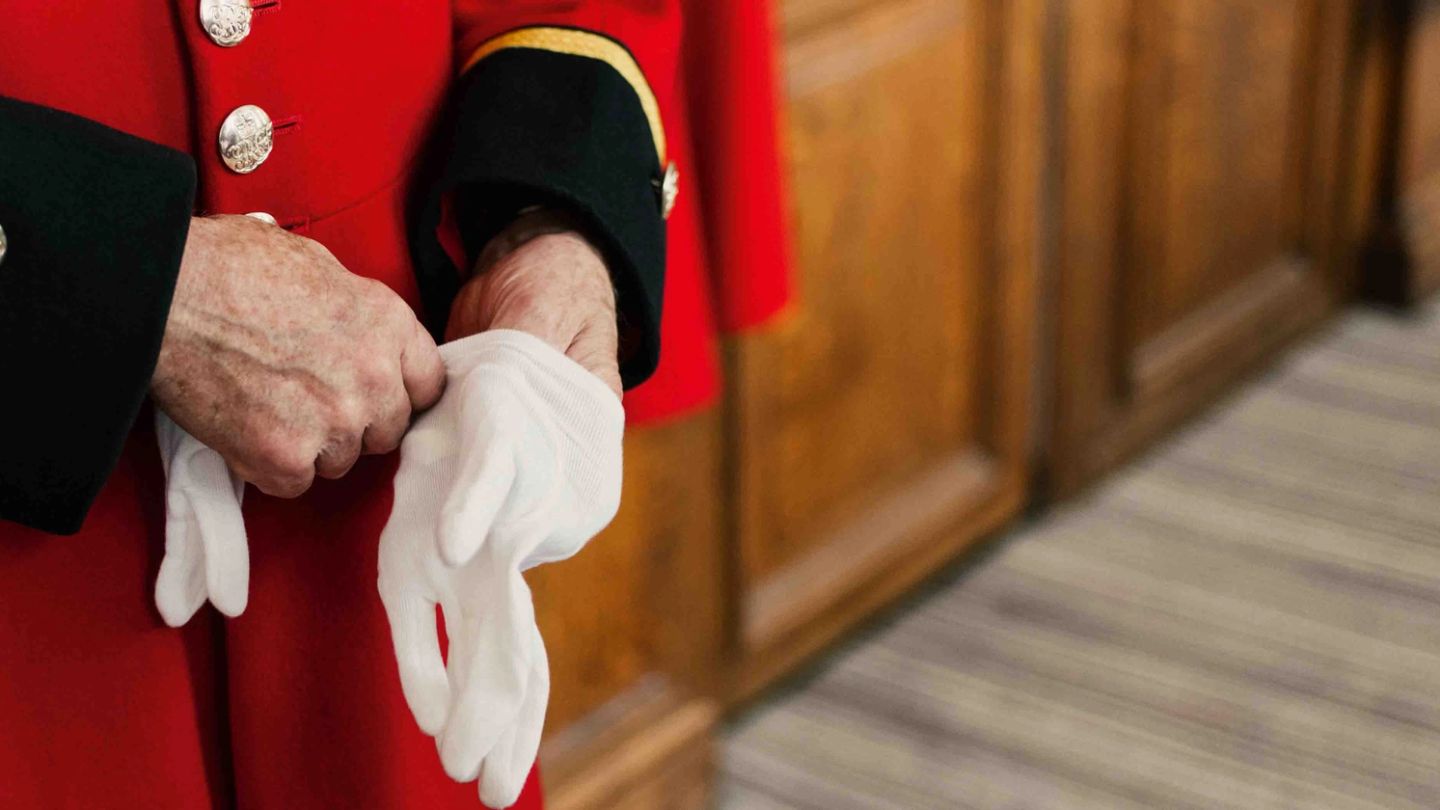
Behind the scenes at Royal Hospital Chelsea
At the RHC, Founder’s Day is the biggest event of the year — a grand display of history and heritage that celebrates the Hospital’s military origins...
Words: Edwin Smith
Photography: Lauren Maccabee
As the Band of the Coldstream Guards strikes up and the strains of Rule, Britannia! reverberate around the cloisters, an elderly gentleman with a distinguished moustache taps his fist to his heart in time with the music. We catch one another’s eye and nod in recognition: it’s rousing stuff.
We’re in Figure Court, at the heart of the Royal Hospital, Chelsea — home to the famous scarlet-coated Chelsea Pensioners — where the band, along with about 200 of the Pensioners, are preparing for the biggest day in the institution’s calendar.
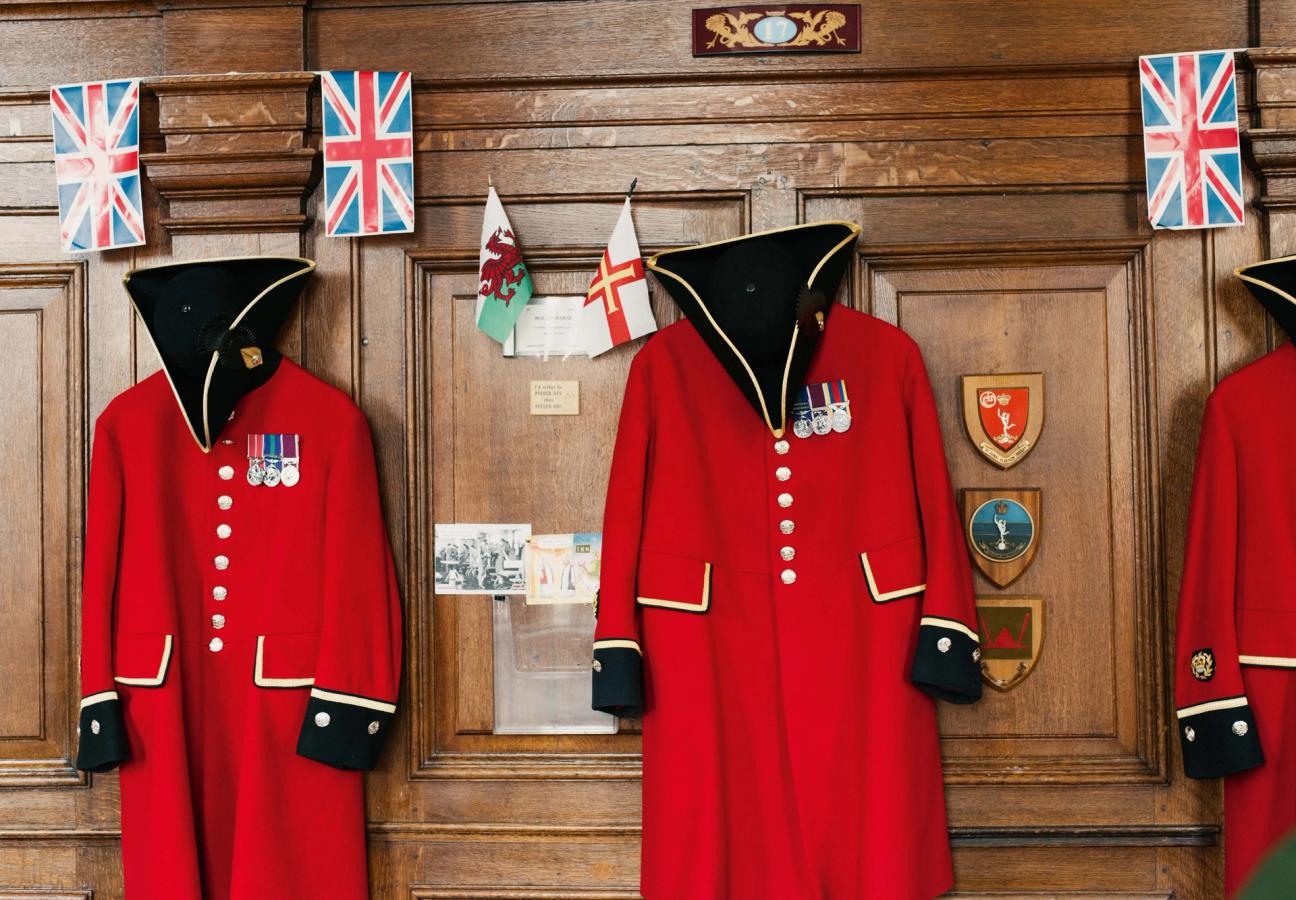
In a week’s time, around 3,500 people — dignitaries, friends, family and royalty — will descend on the Hospital to mark its Founder’s Day, 336 years after it was first established in 1682.
A rich history...
The Hospital is not so much a ‘hospital’ but a care home, and was founded by Charles II after he returned from Europe having seen Les Invalides, a retirement home for French war veterans in Paris. The architect, with support from the new king, was hugely influential in London’s regeneration following the Great Fire and went on to build or rebuild 52 London churches, including St Paul’s Cathedral.
Much of the Royal Hospital is as it was when it first opened its doors to veterans in 1692.The Grand Hall and Chapel sit either side of a 130 ft-high domed atrium and are replete with the original wooden benches and panelling. Everywhere you look, history looks back at you. A vast fresco representing Charles II dominates one wall of the Grand Hall, which serves as the pensioners’ day-to-day dining room.
"Everywhere you look, history looks back at you..."
The purpose of the Hospital hasn’t changed much either. It is still intended as a home for retired members of the British Army. Some former officers are admitted, but only those who served in the ranks for at least 12 years before getting their commission, which tilts things in favour of soldiers.
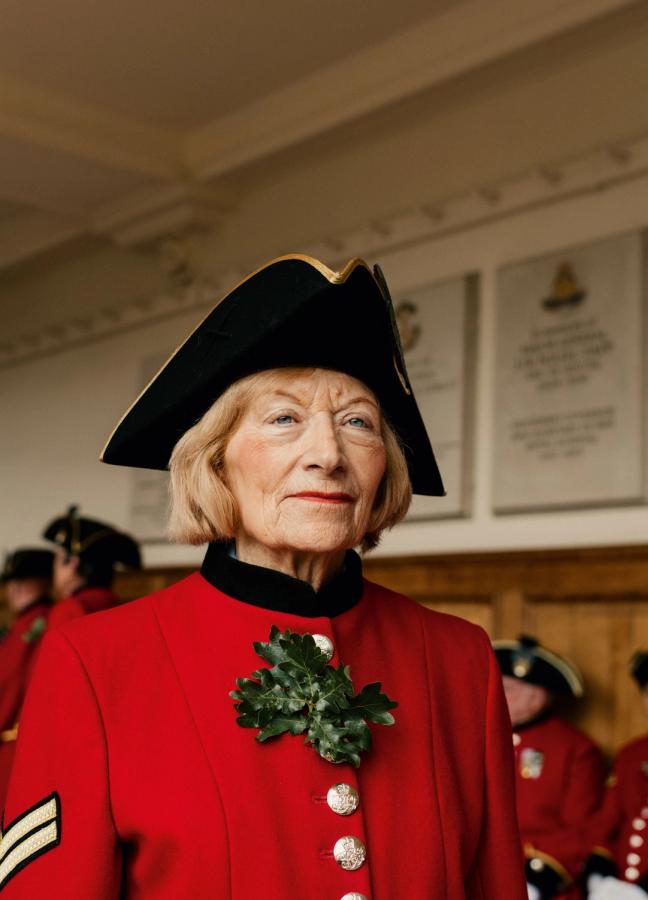
There is some means testing and successful applicants must forgo their army pension to cover some of the cost. Women have been admitted since 2009, although only 16 of the 300 or so pensioners are female.
There is also a stipulation that Pensioners must have no financial obligations to support any family members, which means that many come to the Hospital for the first time after the death of a spouse. The average age of a Chelsea Pensioner is 84.
A new type of family...
“The vast majority come in on the back of a bereavement,” explains John Rochester, a former Regimental Sergeant Major of the Royal Scots Dragoon Guards who is now heritage manager at the Royal Hospital. “It depends on how far through that process they’ve managed to get. But coming here is often a big change. You’re the new boy— it’s like going to a new school.”
After an 18-year army career, Rochester worked in Canada as an operations manager for an American security company before joining the Royal Hospital 18 years ago. He now has responsibility for the museum, archive, tours and outreach activities, but also plays a prominent role in preparations for Founder’s Day. “It epitomises who we are,” he says. “We are a Royal Hospital. We commemorate our royal founder because we’re military. And the way we do that is, basically, to show off.”
“The vast majority come in on the back of a bereavement...”
But the pomp and ceremony of Founder’s Day brings pressure, too. “Some of these guys have been out of the army for half a century. You’re putting them back in uniform and back on parade in front of a crowd of 3,500 people — from the great and the good of the land to their own grandchildren. Lots of them will relish it, but for others it’s very daunting. There’ll be a great sense of trepidation when they go out there.”
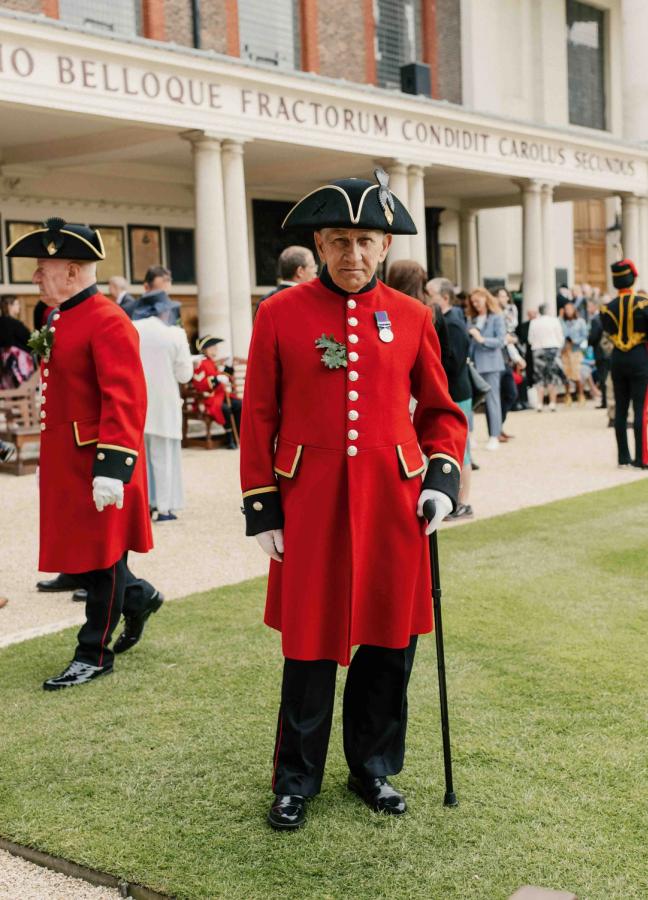
Practice, though, makes perfect. And so I accompany Rochester while he casts an eye over the crucial Founder’s Day rehearsals.
He lends a hand as the mace bearer, Ted Roberts, collects the Hospital’s equivalent of a military standard — the 24lb ‘Sovereign’s Mace’ — and carries it under armed escort into Figure Court.
The parade...
By the time the mace-bearer and his halberd-wielding companions arrive, the other Pensioners have already been ‘sized off’ and are lined up in parade formation around the court’s focal point: a 7ft6in-high gold statue of Charles II that stands on marble plinth.
“Don’t move around!” barks the Hospital’s Sergeant Major, an imposing man of about 50. “Stand still. There’s no need to talk about it.” Behind the ranks of standing pensioners, there’s a row on mobility scooters who, despite not being able to march on their feet, take part in the parade.
"This day epitomises who we are..."
“It’s about getting as many people involved as possible,” says Rochester, who adds that there’s also a “wheelchair detachment” and that even Pensioners who are too unwell or frail to sit and watch the parade will be involved.
The ‘reviewing officer’, the royal family’s representative on the day, will make a tour of the infirmary. “We don’t ask much of the Pensioners,” says Rochester. “But one thing they do have to do is be here for Founder’s Week — unless they can bring a note from their parents.”
This year, the reviewing officer is Prince Michael of Kent. According to Rochester, every “A-lister” has performed the role, apart from the Duke of Cambridge. (Maybe next year, Will?)
Dressed for the occasion...
On Founder’s Day itself, the pensioners will wear their distinctive, traditional scarlet coats. But standing in the summer sun for hours in that garb can be uncomfortable. So, for today’s run-through, the vast majority wear their less formal uniform of light blue shirts and navy trousers.
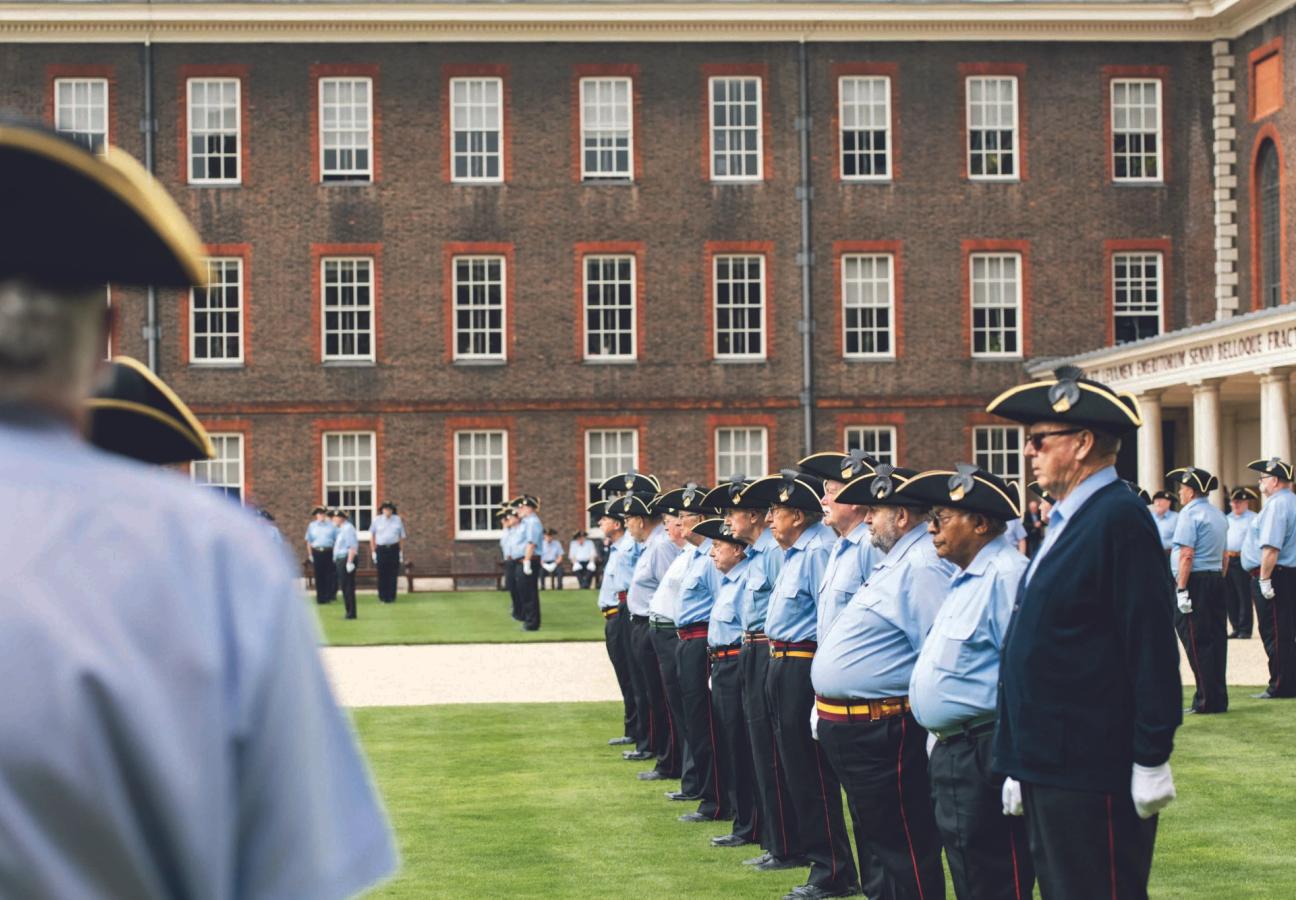
After a few more tunes from the band, and several more barked instructions from the Sergeant Major, the Pensioners disperse and make their way back to their quarters. “There’s no comparison,” says Harry Puttick, who meets me on the landing outside his ‘berth’. Despite the refurbishment, all the berths still have the original wooden panelling that divides them from the communal area just outside.
"I thought I was in heaven when I first came here..."
He sits alongside Dewi Trehane, 88, and the pair banter back and forth as we talk. On the table next to us there are decanters for port and whisky with a sign that reads: ‘Sip slowly and in good company. Matron is aware, though perhaps not wholly approving.’ The text runs below a picture of Hattie Jacques, ‘Matron’ from the Carry On films.
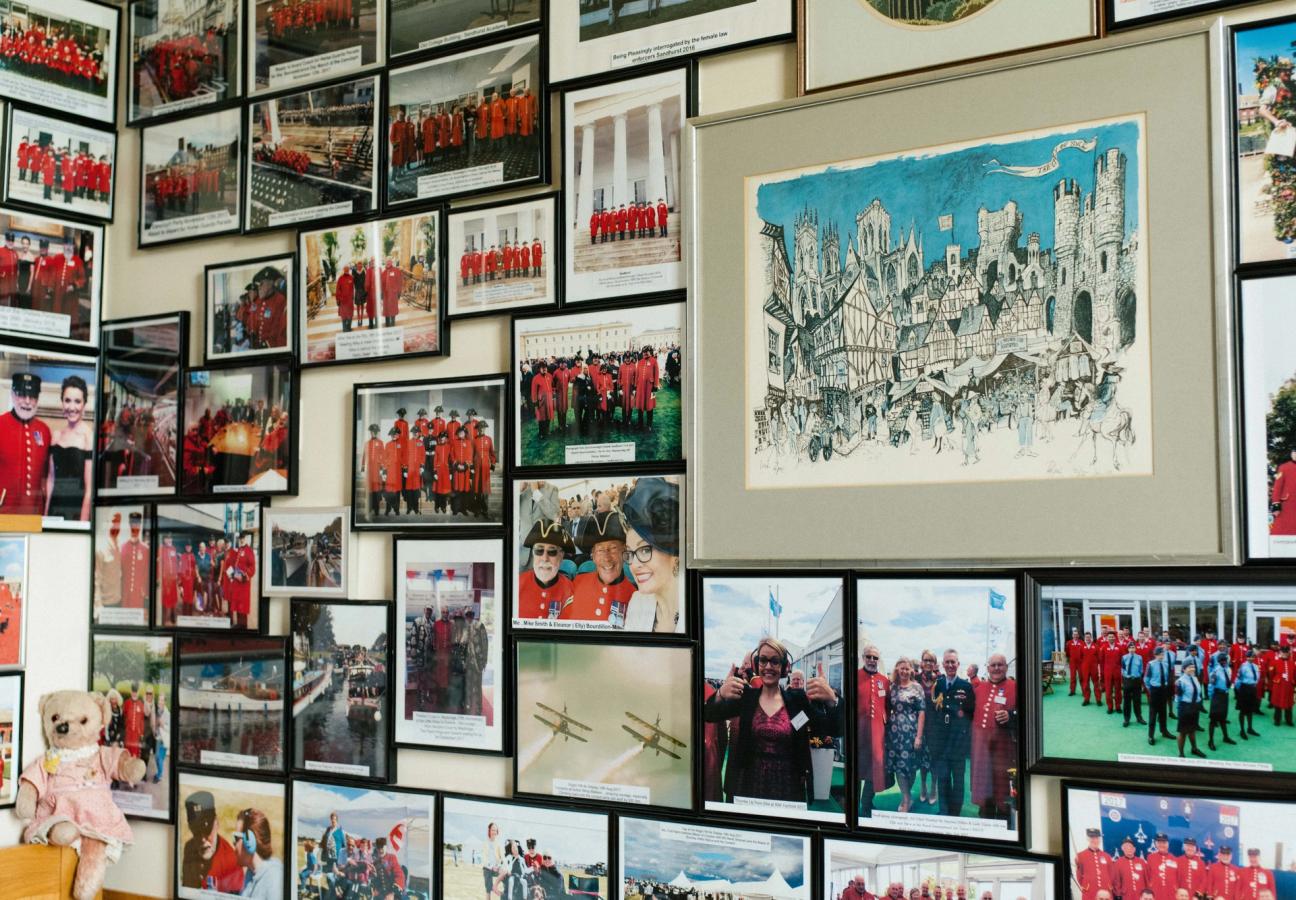
“I thought I was in heaven when I first came here,” says Trehane, who had lived on his own for 16 years in Loughborough before becoming a resident of the Royal Hospital. “It’s a super place.”
He reels off a list of the events that Pensioners have access to, from visits to the Royal Opera House and Albert Hall to art exhibitions and show-jumping. Some of these are as a result of partnerships that the Royal Hospital has with organisations that make use of its 66-acre site to stage events — most famously the Chelsea Flower Show.
A place of refuge...
The Royal Hospital has its work cut out even to maintain its premises and the standard of care it offers now, but the organisation is bracing itself for change.
Improvements in medical care, coupled with recent violent campaigns in Iraq and Afghanistan, mean that it won’t be long before the Hospital has to cater to a significant number of people who have survived into old age despite major injuries that have resulted in amputations and other lasting consequences.
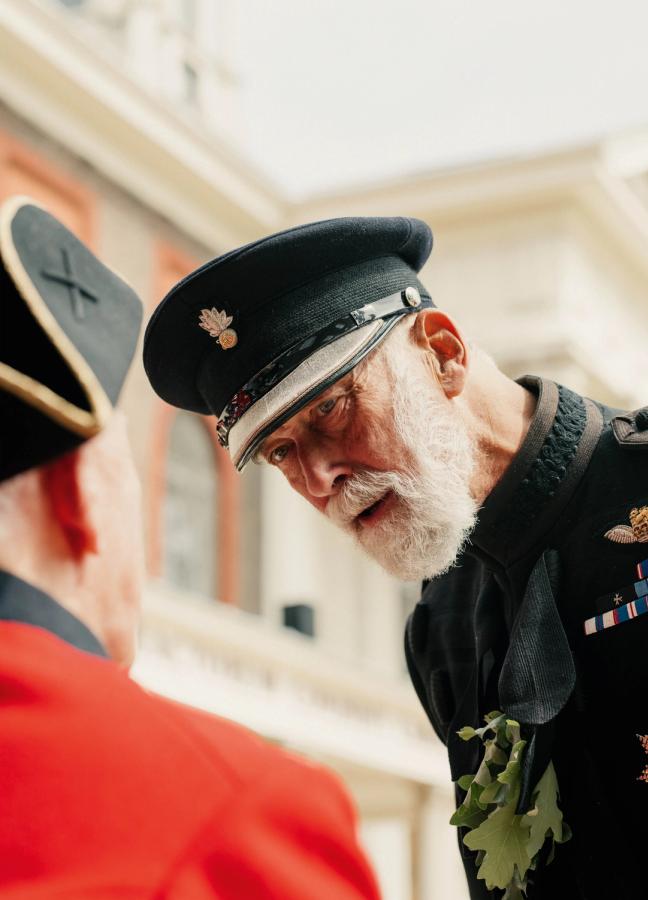
But the Hospital provides something else, too, says Michael Paling, a former regimental butcher and a Long Ward neighbour to Harry and Dewi. “There is a sense of community. We’re a band of brothers — and ladies now too, of course.”
Paling came to the Royal Hospital after the death of his wife, Barbara. Pictures of her and the two of them together cover almost every inch of one of the walls in his berth.
"We’re a band of brothers — and ladies now too, of course...”
And, he says, Founder’s Day is a crucial part of binding the residents together. “It’s the biggest day of the year for the Royal Hospital Chelsea because it’s our chance to say thank you for giving the soldiers somewhere to go.”
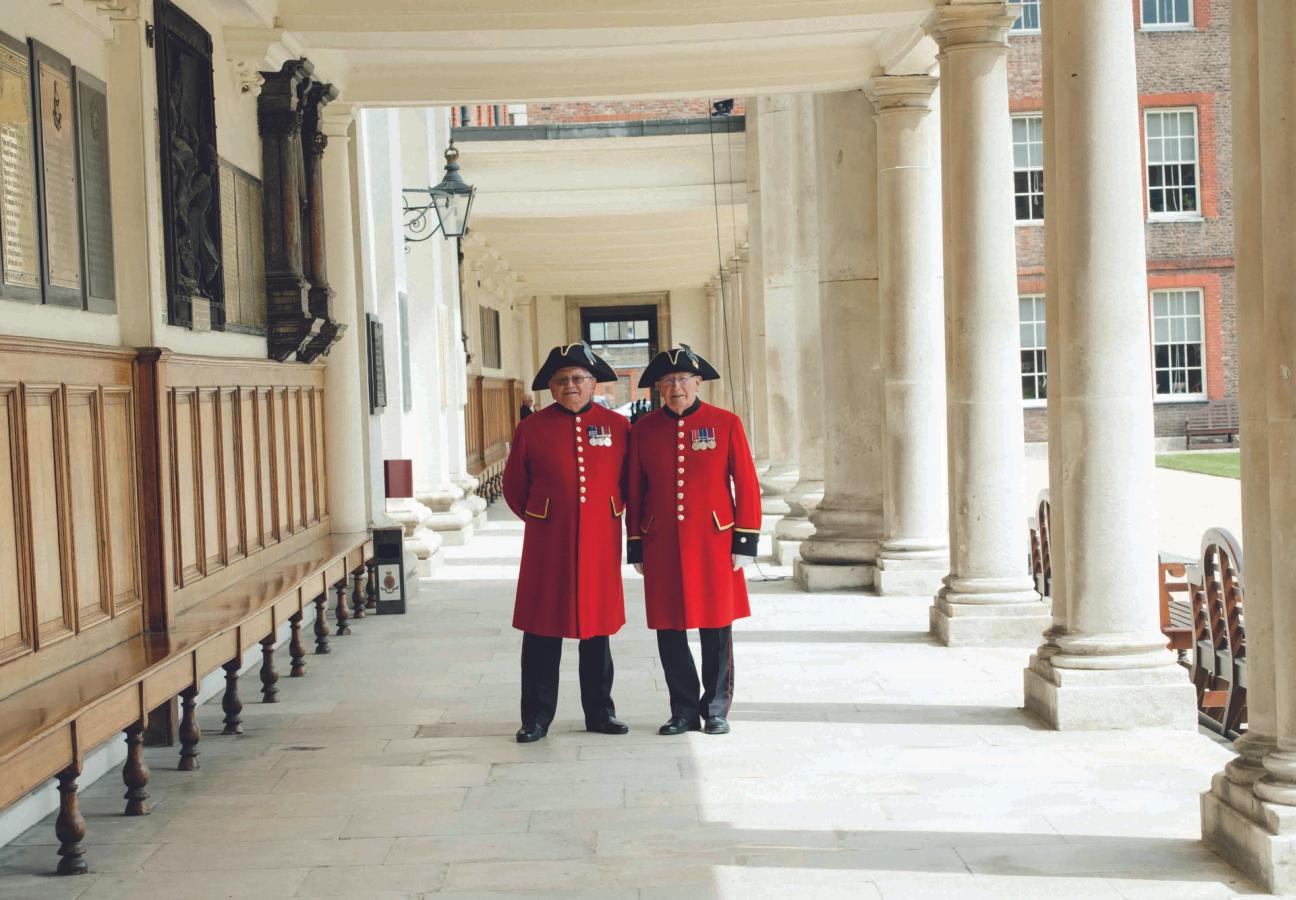
There’s a bit of work still to be done before the big day, he says, but the creases should all be ironed out at the final dress rehearsal in a couple of days. “On the day it tends to work out all right in the end. It’s a damn good show.”
Read the full story in the Sept/Oct issue of Gentleman’s Journal. Subscribe here…


